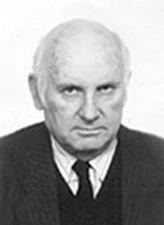Lev Vinnik

The 2004 Beno Gutenberg Medal is awarded to Lev Vinnik for his pioneering studies in observational seismology and the introduction of widely used analysis techniques.
At the beginning of his seismological career Lev Vinnik developed techniques of data analysis and has shown (1965) that microseisms with a period of a few seconds in central Asia are dominated by teleseismic P waves, while surface waves are attenuated at long wavepaths from the oceans. Analysing the amplitudes of waves from nuclear explosions he took into account previously ignored data, those recordings where the signals were weaker than noise. As result, he showed that the ‘average’ amplitudes were biased. Amplitudes of the core-reflected PcP phase suggested that at the base of the mantle there is a heterogeneous zone which is responsible for strong wave scattering (1969). This finding was confirmed by later studies, and it was used by R. Haddon (in 1972) to explain correctly the observations of precursors to PKP phase.
In 1977 Lev Vinnik introduced a technique for the detection of the P-to-S converted phases and observed waves converted from the major discontinuities in the mantle. This approach is now termed ‘receiver function technique’, and it provides the most accurate data on depths and fine structure of the mantle discontinuities worldwide. In 1993 he found, that the ’400 km’ discontinuity is very (a few km) sharp. This fact was confirmed by numerous studies, but up to know it has no explanation. In 1984 he introduced SKS technique to measure shear wave splitting and investigated azimuthal anisotropy in many regions. This method is now being used worldwide. Vinnik early conclusions, that recent plate motion effects comprise a major component of anisotropy beneath continents is supported by many recent publications. To study anisotropy, he proposed in 1984 a receiver function technique. If combined, SKS and the receiver function techniques provide the most powerful tool to study anisotropy in 3-D with a high lateral resolution (2000, 2002). In the course of SKS research Lev observed S waves diffracted at the core-mantle boundary with a significant delay of SV relative to the SH component. The delay cannot be explained by upper mantle anisotropy, and it provides evidence for anisotropy at the base of the mantle (1989). At present, anisotropy is a well established property of the D” layer, and a subject of current research.
In 2000 Lev Vinnik introduced S receiver function technique for the detection and analysis of the S-to-P converted phases. With this powerful technique he obtained the first receiver functions for the Moon (2001), discovered super deep subcratonic low velocity layer in the regions of flood basalts (2002), and investigated lithosphere-asthenosphere boundary beneath the Tien-Shan (2002).
Some of Lev Vinnik studies, like those devoted to the lower mantle discontinuities, can indeed be regarded as a continuation of classical works of B. Gutenberg.
